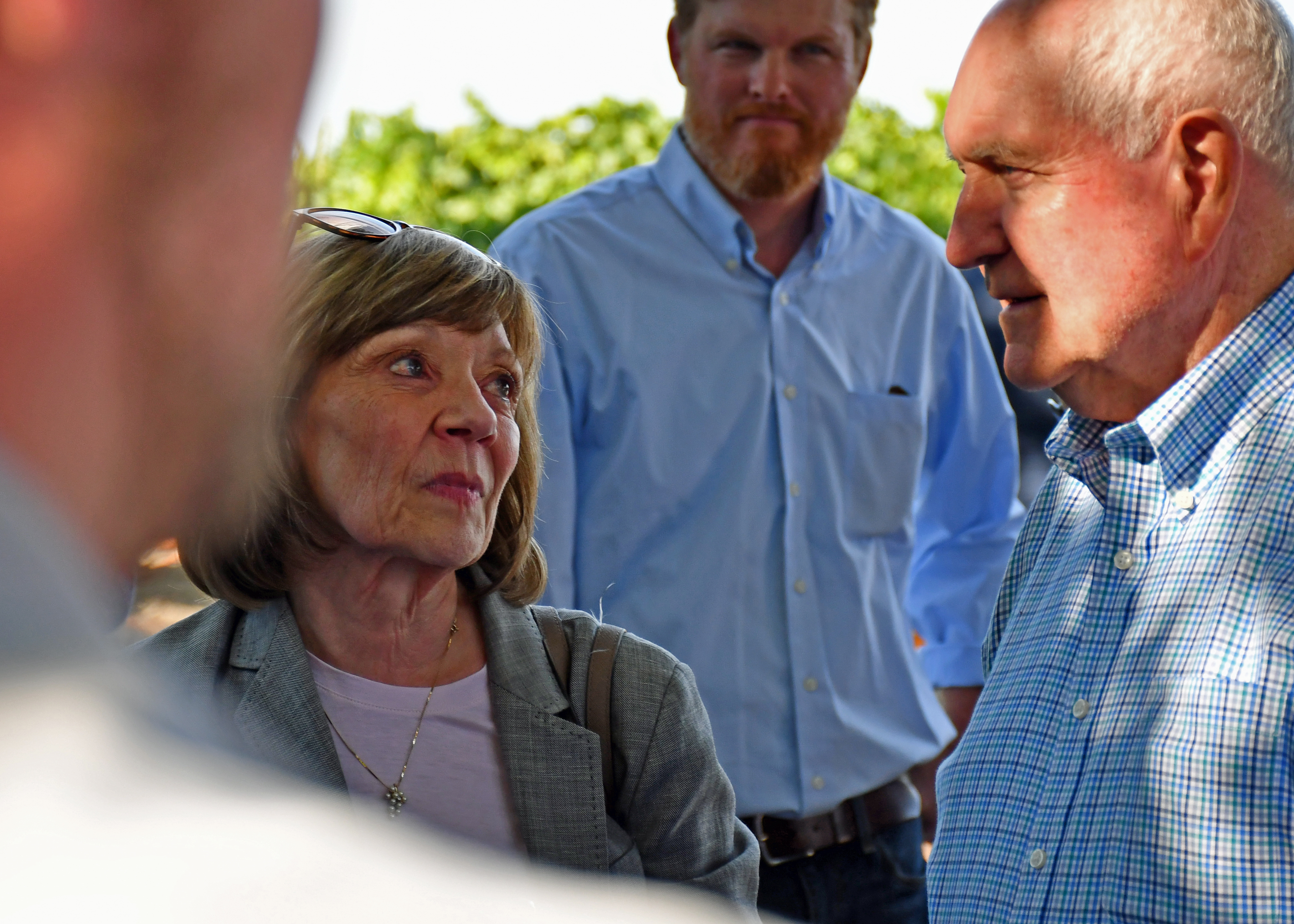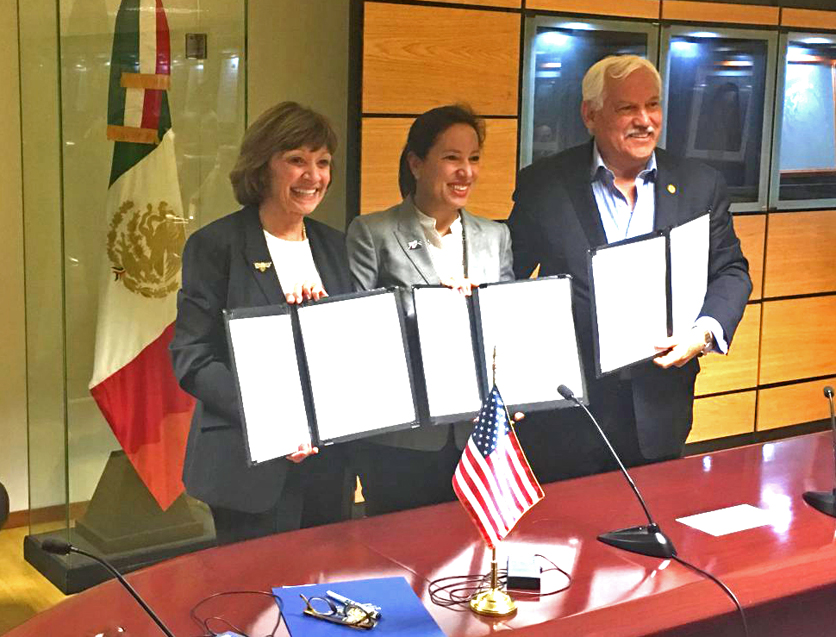California Department of Food and Agriculture Secretary Karen Ross spoke with Agri-Pulse recently on her outlook for 2020.
The conversation has been edited for brevity.
- What are the biggest differences between Gov. Newsom and former Gov. Jerry Brown?
The Jerry Brown years were extremely challenging. The first two were about making really hard decisions on the budget. We lost about 33% of our General Fund support. If it couldn't move to fee-based, those (programs) we had to give up.
What that meant – as far as losing positions, potential staff reductions, elimination of certain functions – is really hard change.
The first four years were just about managing that change and refocusing on how we maintain the world-class scientific expertise we have for our programs, do our job as effectively as possible in a much leaner way and evaluate the risks that came with doing that.
At the same time, there were tremendous opportunities from working with a governor who really did care deeply about ag. He surprised a lot of folks because he knows a lot about agriculture. At that stage in his career and in his life, he was really focused on the history of the family ranch and knew at that time they would be building a home there. He always wanted to know about cattle prices and those kinds of things, because he leases the land out and he wanted to know what other kinds of crops we do there.
But then we go through all this change and the drought happened. That was almost five years of managing and trying to mitigate that. We moved from changes with the budget to one of the most severe droughts we had in decades. That absorbed a lot of time, but led to establishing our Statewide Water Efficiency Enhancement Program, which was the first of our climate-smart agriculture programs. Because of our climate agenda, we were really engaging with ag and setting up our environmental farming panel. That was all good stuff. It was very focused and lean in our operations but positioned us well for the future
Governor Newsom has just been terrific. He's very quick. He comes with this long family history in California. He knows the state very well and traveled it extensively while he was lieutenant governor. He spent a lot of time in the valley while he was lieutenant governor and campaigning. He gets the valley and the rural communities.
With the work of the Water Resilience Portfolio and our continued work on climate, Governor Newsom really wants us to take a very integrated, collaborative team approach across the cabinet. Jerry started that with flattening the silos and working together to solve problems. Governor Newsom is much more intentional. It takes time because you're constantly having to reach out to people.

Ross talks with USDA Sec. Sonny Perdue
- How has the ag community changed during your time in office?
Change is absolutely necessary. When you farm in a state of 40 million people, you need to find partners. This approach of collaboration is critical to success. It's been refreshing to see.
Sometimes it's hard because it feels like they're beating us up. It's hard not to feel defensive when you hear some of the rhetoric. But there are so many opportunities for partnership.
There are so many environmental NGOs who also have figured out that we spent all this money and the species aren't recovering. So they've been willing to step into that space and partner with landowners and farmers.
Examples of early pioneers in that space include Sustainable Conservation – a San Francisco NGO that decided to venture into agriculture, because they're all about finding pragmatic solutions that are good for the environment and for the business. They partnered with dairy, on nitrate issues, of all things.
Look at the rice sector and the long list of partners they have. That's happening up and down the valley now. Everybody wins. You can't have healthy farms if you don't have a healthy environment.
- Can you address the cuts to cap-and-trade funding for the climate-smart programs?
A lot of it will depend on the dialogue with our partners in the Legislature.
The environmental farming title within the bond outlined by the governor when he released his budget includes Healthy Soils and SWEEP. He did put in a one-time General Fund expenditure for SWEEP because he wanted to avoid a gap year and we understand the pressures from (the Sustainable Groundwater Management Act).
The FARMER (program for tractor and harvester upgrades) and dairy digester program are examples of programs that would most likely qualify for the new Climate Catalyst Fund. The creation of that catalyst fund is pretty remarkable. We have known from the beginning that there would come a time when cap-and-trade revenues would plateau and then start to go down because of fewer credits. If we became overly dependent on only cap-and-trade dollars, we would lead people off to not the best sunrise.
Looking for alternatives to supplement funding to make sure we keep this kind of innovation going is really what led us to the Catalyst Fund. Having a revolving loan program that will continually have money coming back in to perpetuate this kind of innovation will be transformative for the entire economy.

Ross signs an agreement on sustainable ag in October with her Mexican counterpart and Lt. Gov. Kounalakis (middle).
- What is the top goal for water?
We can't keep doing water the way we have for decades. I hate to use the term “farms versus fish,” because that's a shorthand, simplistic, lazy way of describing water. Water is so complex, and in many ways, has lots of local aspects.
The governor's announcement and commitment last year to changing the way we do water has to be about collaboration and a commitment to the voluntary agreements.
The agreements will require projects for above- and below-ground storage and a combination of flow and habitat. That gives all of us a chance to come into this space and help problem solve and create new and unusual collaborations. If I had to name one thing that is important for our future, it is being able to create some sort of peace in water.
I’m hopeful this is a new day and a new chapter for California water. If we can do it there, there is a long list of things we could do it in.
- What do you tell farmers worried more pesticide tools are on the chopping block without alternatives available?
This points to the critical importance of publicly-funded research. We've plateaued in our public dollars for ag research, basic as well as applied research.
In my 30 years in the state, it's been very hard because so many specialty crops were not getting the attention they needed. We've seen huge consolidation in the crop protection industry. Where do we get specialty crop attention to do this?
(USDA’s) IR-4 is a critically important program. But it just scratches out a living. When the governor made the announcement last year to put money into that, we needed to have been doing that on a steady basis to make sure we're staying ahead of it. So we're playing some catch up from the publicly-funded space.
We also need to make sure that we continue to maintain investment in our Cooperative Extension – those people who are taking the findings from the campus and translating it to the end user. We've had a huge decline in IPM specialists and ag advisors. There's a lot of private sector services there. But the importance of having Cooperative Extension is that objective, third-party scientific credibility. We're paying now for not maintaining a commitment to that kind of investment.
The younger generation is demanding (alternatives) and consumers increasingly are demanding it. But our job is also to help them understand what it takes to produce that food for the table, and to try to engage in helping support us by advocating for publicly funded ag research that is credible for all of us.
We owe it to food security and to our farmers, ranchers and farmworkers to pursue alternatives as fast as we can. (Chlorpyrifos) has had the ratchet on it for a long time and I don't know that we're any closer (with alternatives). It's not an optimistic picture.
- What other priorities are on your radar this year?
The implementation of SGMA, though we have no direct authority. When the plans are submitted, then there will be the long process of evaluating those: Understanding what is needed, as far as managing aquifer recharge and on-farm recharge; being engaged in those discussions; understanding what those plans might mean with regard to land use planning, such as finding alternative uses for those lands.
Our working lands can be a very important part of our climate resiliency. It's an exciting new space to be in.
Then we have Asian citrus psyllid and virulent Newcastle disease, which hopefully that one will be eradicated and we’ll be declared free from. (VND) has been a long slog
Then we have things like Prop. 12, where we're working on the regulations. There are some legal challenges to that, but it doesn't stop our work.
We're working on our state plan for hemp. USDA has been a great partner, but we're hopeful and optimistic we'll see revisions to their proposal.
With the consolidation of our cannabis program, that's going to be a big change for the cannabis growers, who are like third-generation farmers and want to be recognized as farmers. Also, that's a big change for our employees, who have done tremendous customer service in processing almost 7,000 licenses.
Implementation of the Food Safety Modernization Act: Using all of the data from the last two years of unfortunate illness incidents to pinpoint and develop solutions that prevent illnesses is huge.
The Farm-to-School program’s going to be so much fun, with the work of putting together that grant program (as an incubator project). It's such a great thing for kids and communities, and farmers.
- This is shaping up to be a big year for bee health. How does CDFA intersect with this issue?
We got a law passed last year to give us some funding for our ag commissioners for enforcement. We want to make sure that all of the hives are getting registered, as a way to prevent theft and prevent any potential pesticide drift because people simply don't know where they are.
We're also contracting with Tehama County for their apiarist to assist us. We've added watering stations at all of our border stations. We're doing a pilot program with North Dakota – the first year was with Idaho – where we've done inspections at the point of origin for bees that are warehoused so they can get a clean bill of health. Then that will hopefully help them speed through our border stations. We're starting to get enough data to see if we can take that to more states that have that overwintering warehousing approach.
We've got a lot going on in that space.
For more news, go to: www.Agri-Pulse.com


